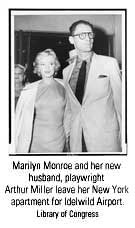Ohhhhhhh! I hate myself. I’m so fat! In reality, I am 5’3″ tall, I weigh 118 pounds and I wear a size six petite pant. Not too many women are willing to divulge that sort of information. So where did my distorted perception of my body image come from? Through lifelong struggles of dissatisfaction with my own body image, I have sought to understand the power of film and the messages it sends to audiences around the world, and more specifically female audiences. In my educational pursuit of a degree in the field of psychology, I have come to see and understand the extensive damage caused by negative spoken and unspoken messages. I am an avid film watcher and I would even go as far to say that I am somewhat of an addict. I must also state, with great conviction, that I feel the unrealistic female body image that has been perpetuated through films, advertising and media has contributed in part to my body image struggles.

Recently I went searching for an entertaining “old” movie for a relaxing Saturday night viewing and decided to watch How To Marry A Millionaire (1953), starring Marilyn Monroe, Lauren Bacall and Betty Grable. Needless to say, I ended up anything but relaxed from watching the film! The number of unhealthy psychological messages delivered to women from this movie had my hair standing on end. I realize that the intended moral of the story, deciding to choose love or money was probably regarded as a positive message, but that message along with the more subtle “unspoken” messages create damaging human perceptions that have been perpetuated throughout time in our American culture. It is those “unspoken” messages and the psychological ramifications of those messages that I must take issue with.
How To Marry A Millionaire tells the story of three models who set-up in a posh New York apartment intent on relieving their financial woes by employing all their talents and drawing upon their best assets to trap and marry the wealthiest men possible. Those assets and talents consist of batting their beautiful eyelashes, wiggling their perfectly sized little behinds, accentuating their disproportionately tiny waistlines, and flashing those blinding white smiles. Ahhh… so the ultimate ideal is to win a wealthy man and the only way to success it through a beautiful face and body! No? The success of this movie was so great that a TV series ran from 1957-1959 and more recently revived through the “reality TV” phenomenon with the 2000 version Who Wants to Marry a Multi-millionaire? Pola Debevoise (Marilyn Monroe) certainly struggled with the ideal image of what a woman should look like. “You know what they say about women who wear glasses”, stated Pola bluntly when Schatze (Bacall) insists that she wear her glasses. Monroe refused to wear her glasses in public, choosing instead to look like a stumbling idiot by running into everything and everyone because her well being was far lower on her priority list than her outer physical image. Obviously, Pola got a powerful message somewhere that took precedence over her own well being. Do I even need to argue the point of how negative messages such as this are very prominent in our culture and in cultures around the world today?
In her private life, Marilyn struggled desperately with wanting to be accepted in society as an intelligent human being with a greater capacity for more serious acting endeavors. The 1953 movie, Gentlemen Prefer Blondes, launched Monroe’s career as a “sex symbol.” It also tagged her with the “dumb blonde” image; both stereotypes plagued her when striving to attain other types of roles in film. Although Marilyn Monroe suffered from a traumatic past, I feel that her disconnected outer and inner body/mind image, along with trying to live inside the box built for her through films and media, impacted her life deeply and contributed to her untimely death at age 36.
The story of Betty Grable, Loco Dempsey in How To Marry A Millionaire, is a revealing example of the unhealthy environment and culture within the film industry itself. Grable was catapulted into the role of star after her 1930’s film Down Argentine Way. Grable gained phenomenal popularity during WW II, known around the world from a 1943 bathing suit photo that showed her from behind. Fox Studio insured her legs for a million dollars with Lloyd’s of London, and she was labeled “the girl with the million dollar legs.” She was also said to be the highest paid star of that era. Regardless of the fact that she had reached such extraordinary heights of success, Grable seemed to struggle with being an ideal female image participant as did Monroe. In one of her last films, Three For the Show (1955), Grable imitates the singing style of Marilyn Monroe. During a post-filming interview, Grable stated, “she felt she was handing her crown on to Monroe.” In a recently read biography on Grable, I found this personal quote: “There are two reasons why I am successful in show business and I am standing on both of them.” I can’t even begin to imagine what kind of stress I would feel everyday if I had to live with the knowledge that someone had taken out a million dollar insurance policy of some part of my body.
You can be sure that Ms. Grable had a tremendous challenge put before her in the task of upholding that beautiful, slender, female body image. Where is the healthy sense of satisfaction from succeeding in life in a situation such as this? In part, it has become lost in the horrible, twisted perceptions that have manifested in female minds of what the ideal female body image should be. I feel film and media have contributed greatly to the perpetuation of extremely unhealthy ideas of what a female body should look like.
In the more recent past, films have obviously placed women with body types that are more in line with reality in starring roles. It is a place to start and I do feel compelled to commend the industry for their willingness to address a very serious issue that plagues a huge percentage of women in our world. I would like to say the change has made a dent in the psychological damage to the female psyche or penetrated the way a large majority of men look at women. In a recent viewing of About Schmidt (2002), I was very discouraged after watching the scene where Kathy Bates joined Jack Nicholson in the hot tub. The look of repulsion and his immediate reaction to leave the tub was worth a million words. My conclusion: men today still drip and drool over a female with a “beautiful body” and they have very little time for women who do not fit the bill when it comes to the age old 36-24-36 ideal female body image!
